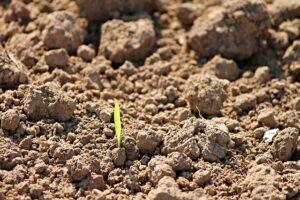Chamber of Agriculture: next year, the rules of the new KAP on crop rotation will enter into force
The preparation of next year’s sowing plans requires even more care than before, after the rules of the new Common Agricultural Policy for crop rotation and the preservation of biological diversity, including fallowing, will enter into force from 2024, the National Chamber of Agricultural Economy (NAK) told MTI on Friday.

(Photo: Pixabay)
This year, at the request of the member states, the European Commission (EC) allowed farmers a temporary exemption from the mandatory crop rotation and fallow design rules related to each support title due to the uncertain global food supply situation, in order to maximize the arable land available to them. be used for production to a greater extent. Hungary – along with several other EU member states – asked Brussels to extend this exemption to 2024, but the European Court of Justice made it clear that next year producers will have to farm according to the rules of the new CAP.
The National Chamber of Agrarian Economy previously produced a number of publications to interpret the new support rules
One of them describes the details of the conditionality rule system, so this publication, which is available on the chamber’s website, nak.hu, can be of great help to producers in the planning of autumn and next year’s sowing structures, they wrote.
One of the most important criteria of the new system of rules concerns the change of seeding
The same crop cannot be sown on the given plot two years in a row, but if a second crop is used between the two main crops, the crop rotation is completed. The second sowing must be sown within 30 days after the harvest of the main crop of the given year – by October 31 at the latest – and announced within 15 days after sowing. The secondary sowing must belong to a different plant family from both main crops, so for example autumn wheat and spring wheat are not appropriate from the point of view of the rules of crop rotation, they pointed out.
The other important group of regulations defines the minimum proportion of non-productive areas and landscape elements on arable land
In addition, it also includes the preservation of protected landscape elements, and prohibits the cutting of hedges and trees during the breeding and chick-rearing period. A protected landscape element is, for example, a solitary tree, a group of trees and bushes, a crane well, a terrace and a small lake. The non-productive landscape elements include – in addition to the protected landscape elements – the wooded, shrubby strip and the small wetland, among others. According to the regulation, the shortest rest period for the area left fallow lasts from January 1 to August 31, during which time it is necessary to ensure that the soil is covered with plants or covered with stubble residues – read the announcement of NAK.
MTI
Related news
EU Council approves changes to agricultural rules to boost competitiveness
🎧 Hallgasd a cikket: Lejátszás Szünet Folytatás Leállítás Nyelv: Auto…
Read more >Thousands of farmers protest in Brussels against EU-Mercosur agreement
🎧 Hallgasd a cikket: Lejátszás Szünet Folytatás Leállítás Nyelv: Auto…
Read more >The government is giving special support to irrigation development
🎧 Hallgasd a cikket: Lejátszás Szünet Folytatás Leállítás Nyelv: Auto…
Read more >Related news
(HU) Idei győztes sorrend: Grand Automotive East, Tesco Magyarország, Nestlé Hungária
🎧 Hallgasd a cikket: Lejátszás Szünet Folytatás Leállítás Nyelv: Auto…
Read more >Bagels, stuffed cabbage and online scams – this could be the Christmas menu for many due to the rise in cybercrime
🎧 Hallgasd a cikket: Lejátszás Szünet Folytatás Leállítás Nyelv: Auto…
Read more >25,000 packages of donations will reach people in need as a result of the 2025 Joy of Giving! fundraising campaign
🎧 Hallgasd a cikket: Lejátszás Szünet Folytatás Leállítás Nyelv: Auto…
Read more >






